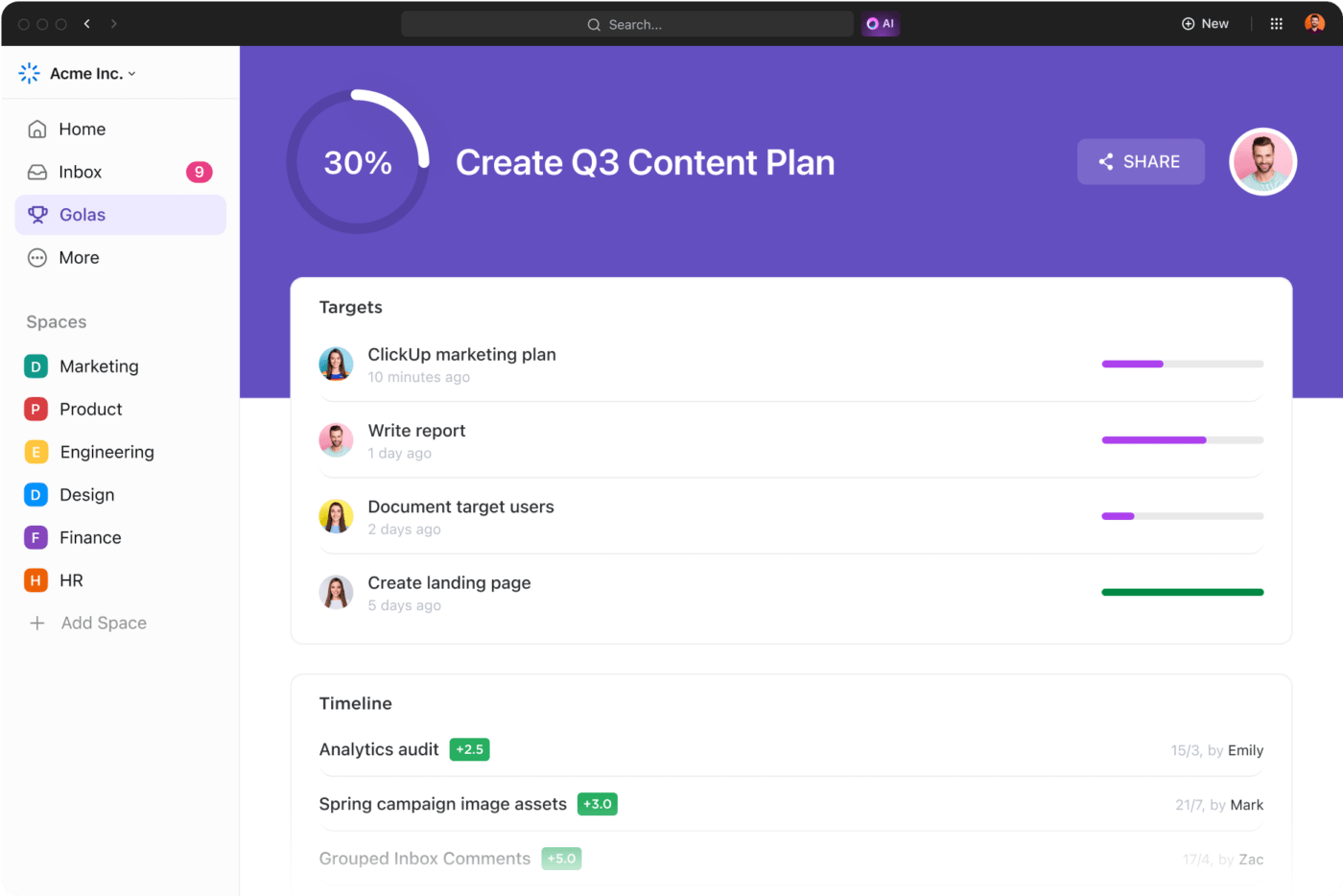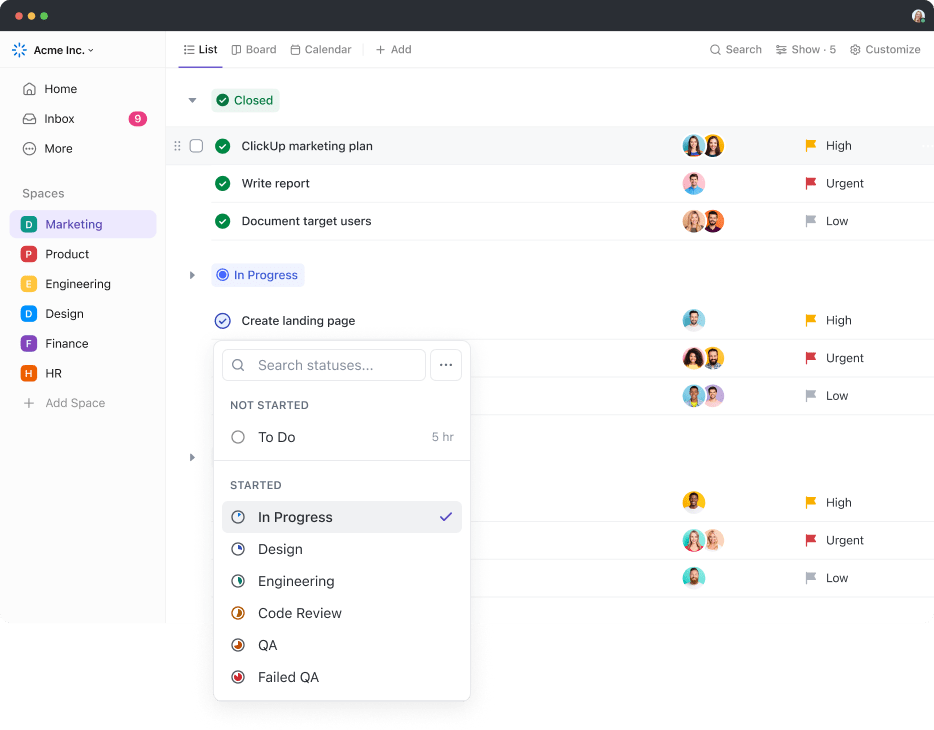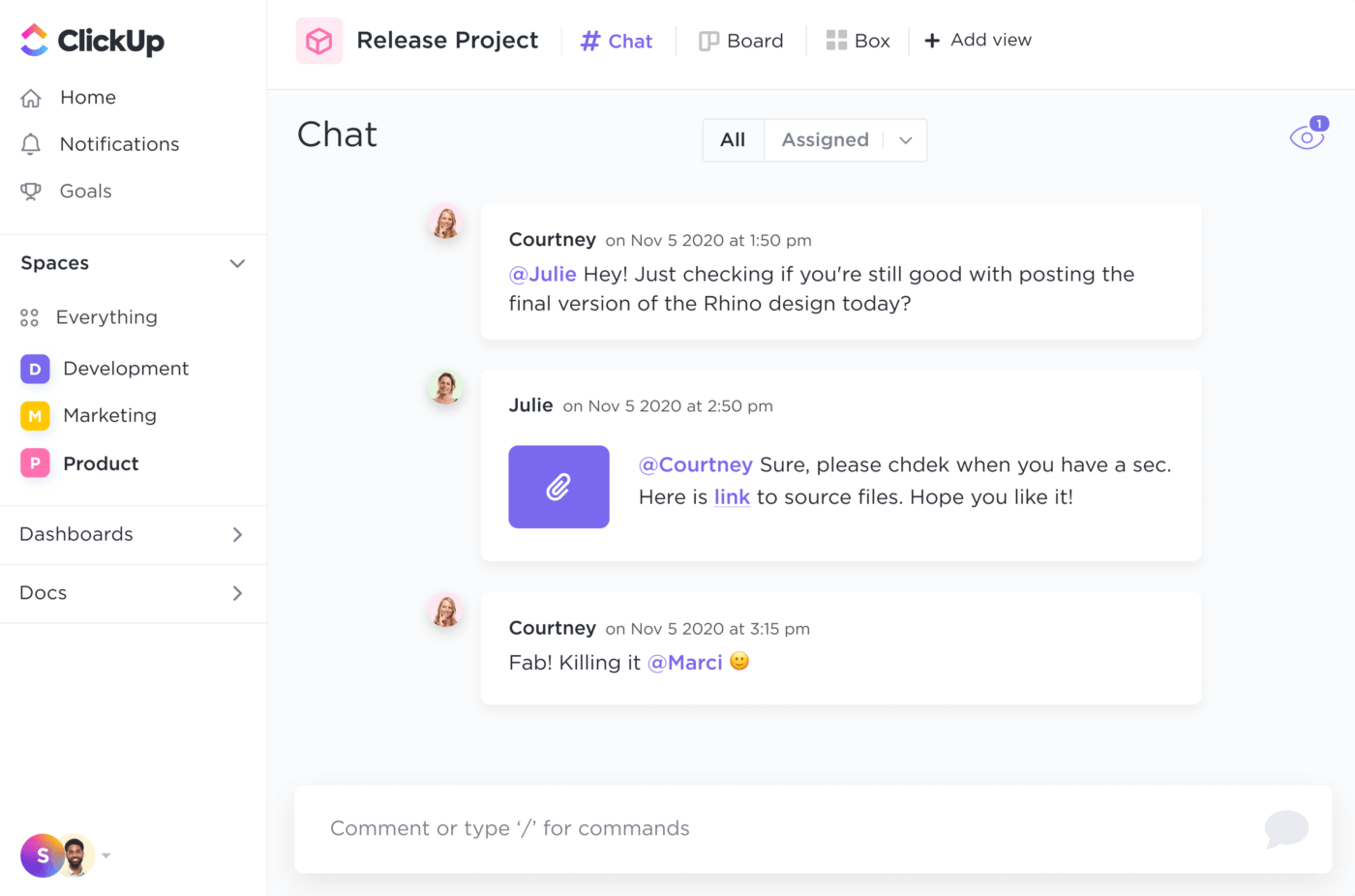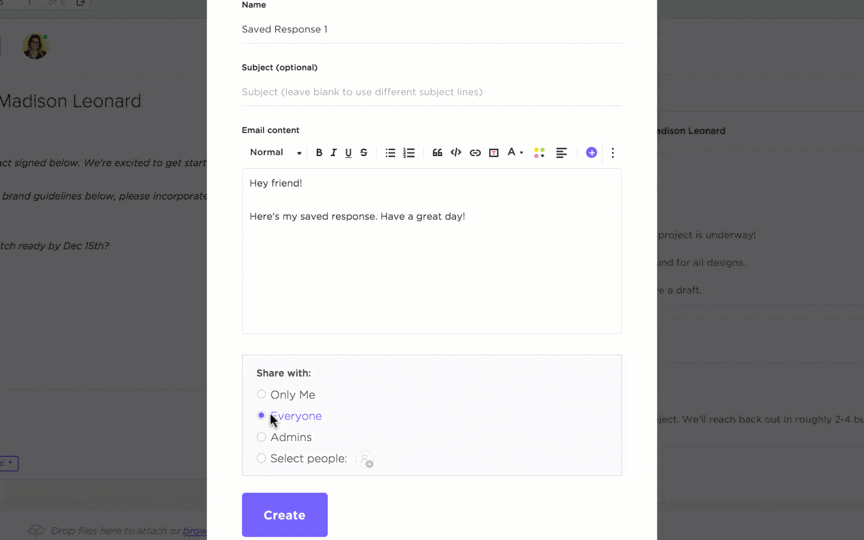How to Build Transparency at Work: A 7-Step Guide

Sorry, there were no results found for “”
Sorry, there were no results found for “”
Sorry, there were no results found for “”
Every organization wants to drive transparency at work—but not all achieve it.
Workplace transparency is the practice of openly sharing information, goals, and responsibilities throughout an organization across all levels. It involves ensuring everyone understands their larger role in impacting the business (and strategy), improving employee engagement and productivity, and, by extension, making a manager’s life easier.
A culture of transparent communication encourages employees to share feedback, ask for help, and collaborate more effectively. This leads to increased engagement, clarity, and agility within the organization.
Use this guide as a primer to embrace transparency in the workplace and learn about the benefits that follow.
Employees trust an organization more if it is open about its decisions, strategy, and efforts. Managers who clearly discuss organizational goals will get higher employee buy-in for achieving the brand vision. As everyone works towards the same goal, team collaboration and job satisfaction see an uptick.
For employees, the most significant advantage of a transparent workplace is communicative managers who take the time and effort to provide guidance about the company’s vision to the team and discuss the employees’ professional goals.
In a transparent organization, managers openly share information about company strategy, goals, challenges, and overall business outcomes with their teams. With guidance and clarity on organizational goals, there is an atmosphere of trust and collaboration in the workplace.
Organizations that understand the pulse of their workforce benefit from enhanced employee engagement, job satisfaction, and productivity. The real question is: Can transparency in the workplace improve employee productivity? The short answer is yes.
For instance, improved transparency in projects helps employees get a granular understanding of how their work is contributing to the project’s success:
Getting buy-in becomes easy as employees see the tangible outcome of their hard work.
Managers showing transparency in leadership enable employees to experience a sense of belonging from being included in the decision-making process.
No matter how you slice it—employees and managers both stand to gain from a transparent workplace culture.
Listing transparency as a core value is not enough; building transparency in the workplace requires a mindset and systemic change. Here’s a step-by-step guide on creating a transparent culture you can make your own:
Employees often have difficulty trusting leadership if decisions are made behind closed doors and the team is not involved in day-to-day affairs.
The first task is to define what transparency translates to in your company. Does it mean:
If employees understand the meaning of transparency, they’ll embrace it more openly and quickly.
Organizations must move beyond simply stating a commitment to transparency to truly fostering trust and engagement. Demonstrating this value in everyday practices is critical. Establish a positive loop by showing employees how the organization promotes transparency at every step of the employee experience.
Here’s how leaders can model transparency within the organization:
Demonstrating these behaviors consistently will enable leaders to create a culture of transparency where employees feel valued, informed, and engaged.
While oversharing is better than under-sharing, you still want to find the right balance in transparent communication. Here’s how to avoid over-communicating:
To make things simpler, use the ClickUp Communication Plan Template to plan your business messaging strategy, improve internal and external communications, organize communication goals and timelines, and communicate consistently with cross-functional teams:
Every task, project, initiative, or sub-task must be mapped to an owner. Establishing accountability is a stepping stone to creating a culture of open and honest communication.
Going granular ensures greater visibility into who is doing what at every level. To prepare better, look at other organizations known for their transparent practices and replicate the model as needed.
You must also conduct check-ins and daily standups to review progress and reiterate objectives, helping the team morale stay high.
ClickUp allows you to ensure transparency at scale by adding relevant stakeholders as watchers to tasks or projects.

A transparent work culture allows employees to ask questions or share feedback without fearing ridicule or judgment. As a manager, you must create opportunities for this.
To make the feedback more well-rounded and gather an on-the-ground perspective, use ClickUp’s Employee Survey Software Template to get a sense of employee sentiment.
Set up suggestion boxes, roll out anonymous feedback forms, and conduct regular one-on-one feedback sessions. This survey will help managers to understand how the team feels about their work. The insights gathered can be used to improve the organization’s employee engagement efforts:
To inculcate a culture of transparency among employees, use these steps as a starting point:
Solid documentation is at the center of accountable workplaces. Every vital discussion and decision is promptly chronicled to help the team move with clarity.
That said, there are a few points to keep in mind:

Understanding every employee’s role and responsibilities within the company structure builds alignment and trust. But with multiple departments and hundreds of goals, tracking every goal for every team member can be an uphill task. Enter ClickUp Goals—a tool that maps roles, targets, deadlines, and reporting structures to create transparent workplaces.

The 7 steps to transparency, recapped:
It’s common to wonder what an intangible concept like transparency looks like in the workplace. Below are four examples that throw light on a more transparent workplace culture:
You’re setting the team up for failure if there’s any second-guessing about who is responsible for specific tasks, goals, outcomes, etc.
Insufficient communication can lead to information gaps; the ClickUp Project Management solution helps fix this.
ClickUp offers multiple features to drive project transparency, team collaboration, and information visibility. Within this task management platform, managers can view the activity of team members, track tasks, add viewers to tasks, and more:

Tip: You can add sub-tasks to bigger tasks and assign owners for each, creating an inter-connected workflow and improved transparency

Accountability increases as each task gets mapped by priority, start and end date, progress, owner, etc.
ClickUp is a centralized solution for managing multiple project resources, identifying roadblocks, and streamlining workflows, all with a few clicks.
A clear indicator of a transparent work culture is when everyone understands company policy, vision, and goals.
Managers play a proactive role in ensuring that everyone is well-informed about:
Tip: Use shareable, trackable ClickUp Goals to create accountability and keep everybody in the loop

Given the many elements to keep track of, an AI-powered tool like ClickUp Brain can help managers get ahead of their tasks. The tool offers three features to connect the tasks, people, and documents in one place:
Approachable managers are the first sign of a transparent workplace. They actively engage in discussions about:
Maintaining open communication enables managers to demonstrate their commitment to promoting transparency.
To make communication a core component of their work style, managers can use free HR templates such as ClickUp’s Corrective Action Plan template to identify areas of improvement within team performance, define communication-related challenges the team faces, list possible solutions for two-way interactions, and drive honest performance reviews.
Collectively, these efforts create a supportive environment where employees feel valued, heard, and empowered to contribute their time, ideas, and feedback.
But where do managers begin? How can you stay connected and communicate with your entire team as the workload progresses? The solution is ClickUp Chat—an instant way of reaching out to colleagues and getting the conversation going:

Lack of vital information feeds into project delays, misunderstandings, and team inefficiencies.
When the information you need is easily accessible, these issues are minimized, and tasks get completed more swiftly and accurately.
One way to store and collect helpful information is to use database software. Another way to organize and disseminate information within and between team members is by using features like ClickUp Docs and ClickUp Hierarchy.
ClickUp Docs is excellent for creating shareable documents that enable workplace transparency. Teams can co-edit in real time, use comments to tag people, assign tasks, create tables, track ideas, and more:

If you want to look at the big picture and organize your work with a scalable infrastructure, ClickUp Hierarchy is worth considering. Want to get a birds-eye view of your entire Workspace and everything in it? Check. Wish to organize separate departments and teams under Folders with unique permissions? Check. This feature delivers on all accounts.
The hierarchy is fundamental to ClickUp’s organizational structure, and it can be customized to fit your workflow.
Here’s what ClickUp Hierarchy would look like for a team or department: Start by creating your own Space. Within the team Space, organize all the projects in a Folder and represent each project as a List. Add respective tasks for each project within the respective project list:

There’s more to increasing workplace transparency than meets the eye. This layered concept involves keeping employees in the know, discussing successes and failures (without oversharing), and enabling employees with ongoing learning.
Add these to your transparency checklist and build a positive work culture:
Solidifying employee trust starts with honest information sharing (but not oversharing). Employees who encounter sudden surprises, uncertainty, and indecisive behavior will not be able to trust the organization.
To bolster your reputation as a strong leader:
Employees perceive transparent communication as essential for fostering alignment, trust, and a positive work culture.
When communication is transparent, employees understand the reasoning behind decisions, feel valued, and stay engaged. This also applies to any feedback from managers and leaders.
However, achieving transparency can be challenging, especially in environments where information is closely guarded. These tips can help:

Want to drive transparency at work? Improve your employee engagement efforts by getting your team trained for relevant skills and expertise.
Training helps employees understand their roles and responsibilities better. When employees know what is expected of them, they are more likely to communicate openly about their progress, pain points, and needs, fostering transparency.
But before you set up a training program, have conversations around:
You can use database templates such as ClickUp’s Employee Record Template to maintain employee records, track interactions, and so on.
Capture employee data related to performance reviews, benefits offered, vacation days, and more. Having all of the employee data in one place ensures you have a 360-degree view of each employee’s experience with the organization at one click:
You can’t set up a full-fledged training program without first assessing your employees’ learning needs. In this scenario, a 360-degree feedback software comes in handy. It helps get continuous input from peers, supervisors, etc., creating a fair and transparent workplace.
For transparent performance evaluations, your team must understand how their performance is being evaluated. Use these tips to help the team get on board with your evaluation process:
Without 1-on-1 meetings, the manager-employee relationship can take a hit. However, when used strategically, these meetings can double up as a powerful coaching tool. View these meetings as meaningful as they benefit the team members and the manager to understand how each part can improve performance.

As a manager, make your 1-on-1 performance discussions count with these tips:
Transparency in the workplace should be an integral part of your organization’s fabric. Leaders who prioritize practices, routines, and decisions to improve transparency will benefit from a highly motivated and productive workforce.
A tool like ClickUp helps managers offer one-click access to information, engage in meaningful conversations with employees, monitor goals and business performance, and drive the organization forward with employees seeing eye to eye. Try it, and see for yourself—Sign up now!
Let’s understand the meaning of transparency at work. A transparent workplace fosters open, honest conversations between employees and management. It aims to address matters such as business performance, goals, and objectives in a two-way dialogue.
Common examples of transparency in the workplace include:
Improving workplace transparency helps encourage employees to understand the value of their work and give their best. With increased motivation, employees get better at their work. Managers reward them for their hard work, leading to an enhanced employee experience.
© 2025 ClickUp